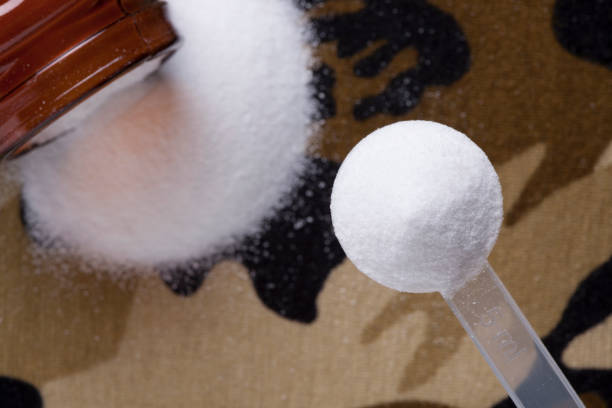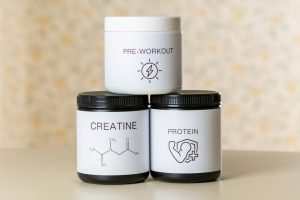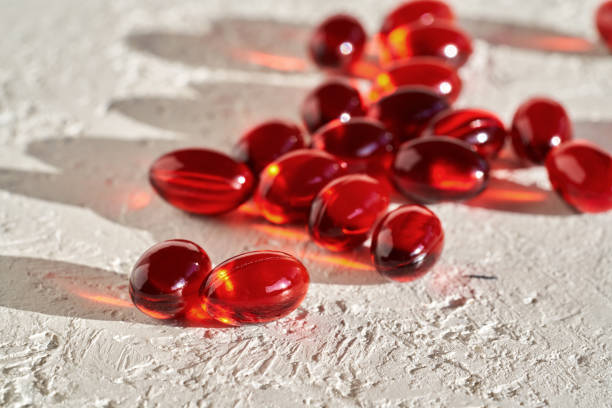Kreatin HCL ve Monohidrat Arasındaki Fark
Kreatin has become one of the best-researched and most popular sports supplements available today, with documented benefits toward raising levels of athletic performance, promoting muscle growth, and enhancing recovery. Out of the many different varieties of creatine, two come to the fore for specific popularity and scientific support: Creatine Monohydrate and Creatine Hydrochloride (HCL).
An Overview of Creatine and Its Function Within the Body
Creatine is a nitrogenous organic acid that is naturally synthesized by the body from glycine, arginine, and methionine. Most creatine and phosphocreatine storage is located inside skeletal muscle; it can be found there in its free form or bound as phosphocreatine.
Key Functions:
- Energy source via the phosphagen system
- Resynthesizes ATP during high-intensity activity
- Promotes muscle volumization through cell hydration
- Neuroprotective and cardioprotective effects in some tissues
What is Creatine Monohydrate?
Chemical Structure:
Creatine monohydrate is essentially composed of one molecule of creatine and one molecule of water, thus having the chemical formula C₄H₉N₃O₂·H₂O.
Background:
- First synthesized in the 1830s.
- Launched as a supplement product in the early 1990s.
- Referred to as the “gold standard” due to its extensive scientific validation.
Benefits (According to Research):
- Increases muscle strength and power
- Improves sprint performance
- Enhances lean body mass over time
- Potentially positive for neurological health
Bioavailability:
- Absorption Rate: High (~99% muscle uptake with loading phase)
- Solubility: Moderate (~1.5 g/L at room temperature)
- Stable under neutral pH and typical storage conditions

What is Creatine HCL?
Chemical Structure:
Creatine HCL is creatine attached with the hydrochloride group (HCl), thus more acidic. Its formula is C₄H₁₀ClN₃O₂.
Rationale for Development:
- To increase solubility
- To reduce water retention
- To avoid GI distress that may be associated with monohydrate
Solubility and Stability:
- Solubility: Extremely high (~38 times more soluble than creatine monohydrate)
- Stability: More stable at a low pH (acidic environment) of the stomach
Marketed as an “improved” version, though peer-reviewed evidence remains limited.
Karşılaştırma Tablosu
| Parameter | Kreatin Monohidrat | Kreatin HCL |
|---|---|---|
| Chemical Form | Creatine + water | Creatine + hydrochloride |
| Molecular Weight | ~149 g/mol | ~196.6 g/mol |
| Çözünürlük | ~1.5 g/L | >50 g/L |
| Dosage | 3–5 g daily | ~1–2 g daily |
| Absorption | High (especially with carbs) | Potentially higher (theoretically) |
| Loading Phase | Recommended (20 g/day for 5–7 days) | Not required |
| Su Tutma | Common | Less likely (claimed) |
| GI Discomfort | Possible at high doses | Rare |
| Maliyet | Affordable | More expensive |
| Scientific Support | Extensive (>1000 studies) | Limited (mostly anecdotal) |
Scientific Research & Evidence
Creatine Monohydrate:
About five hundred randomized controlled clinical trials have involved kreatin monohidrat; therefore, meta-analysis research has validated the following results as typical areas where this supplement is effective:
- Increases strength (bench press, squat, leg press)
- Increases repeated sprint ability (RSA)
- Increases muscle hypertrophy (Type II fiber area the most)
- Improves cognitive function
- Shows potential in neurodegenerative diseases (e.g., Parkinson’s and ALS)
A 2017 review by Forbes et al. found that creatine monohydrate works for both trained and untrained individuals.
Creatine HCL:
Most claims come from manufacturer-funded studies or anecdotal evidence. One peer-reviewed study (Jagim et al., 2012) found no significant difference in muscle creatine retention between HCL and monohydrate when dosed appropriately, though the study was small and short-term.
Bioavailability and Solubility: Is HCL Better?
Creatine HCL is more water-soluble, meaning easier mixing and possibly less stomach discomfort. However, higher solubility doesn’t automatically result in better muscle uptake since creatine transporter saturation is reached at low plasma levels.

Effectiveness in Muscle Building and Athletic Performance
Monohydrate:
- Increases intramuscular phosphocreatine by 10–40%
- Improves short bursts of high-intensity effort
- Supports long-term lean mass gain
HCL:
Claims suggest faster uptake with lower doses, but real-world performance outcomes are generally equivalent to monohydrate when used properly.
Side Effects and Safety Profile
Creatine Monohydrate:
- Well-studied and safe for long-term use
- Possible side effects: water retention, minor GI distress at high doses
- No evidence of kidney or liver damage in healthy users
Creatine HCL:
- Anecdotally, causes fewer side effects like bloating
- Lack of long-term safety data
Always stay hydrated when taking any creatine form.
Dosage Recommendations
| Goal | Kreatin Monohidrat | Kreatin HCL |
|---|---|---|
| Loading | 20 g/day for 5–7 days | Not necessary |
| Bakım | 3–5 g/day | 1–2 g/day |
| Timing | Post-workout or with carbs | Anytime (pre or post) |
| Form | Powder or capsules | Capsules or powder |
Cost and Accessibility
- Creatine Monohydrate: Widely available, inexpensive, often in bulk or micronized form.
- Creatine HCL: Typically 2–3x more expensive per gram, found in pre-workouts or capsules.
Winner: Monohydrate, for cost and research support.
Use Case Scenarios: Which One Should You Choose?
| User Type | Recommended Form | Rationale |
|---|---|---|
| Beginner | Monohydrate | Proven, cost-effective |
| Sensitive Stomach | HCL | Anecdotally, easier to digest |
| Budget-Conscious | Monohydrate | Affordable |
| Travel-Friendly | HCL | Portable capsules |
| Elite Athlete | Monohydrate (Creapure) | Informed Sport certified |
Final Verdict: Which Is Better?
Kreatin Monohidrat remains the gold standard due to extensive scientific research, proven results, safety, and affordability.
Kreatin HCL may suit those with GI sensitivity or a preference for smaller doses, but lacks robust long-term data.
Creatine HCL does offer enhanced solubility and might reduce bloating, but Kreatin Monohidrat dominates in terms of clinical validation, cost, and long-term safety. Unless specific personal tolerance or convenience issues exist, Monohydrate is the logical and effective choice for most users.



